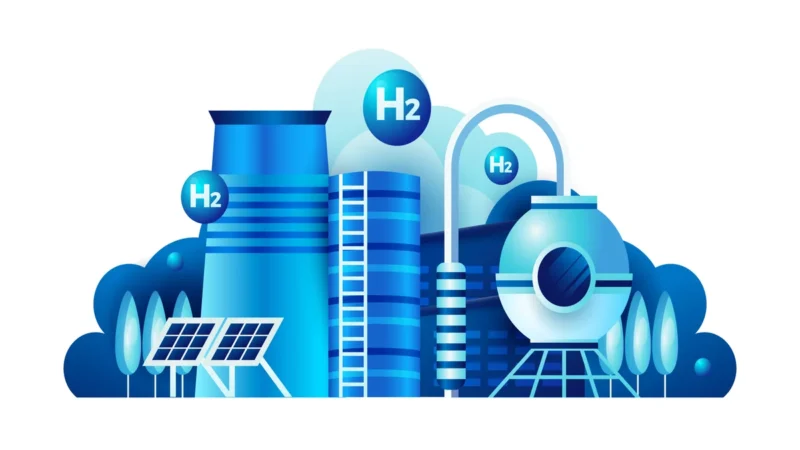Eco-Friendly Economies: How these emerging economies are shifting towards a low-carbon future?

As the world grapples with the pressing issue of climate change, emerging economies are taking the lead in shifting toward a low-carbon future. These nations, often characterized by rapid industrialization and substantial carbon footprints, are now actively pursuing strategies to reduce their greenhouse gas emissions, increase energy efficiency, and transition to cleaner, more sustainable sources of energy. This shift is not only a response to global climate goals but also a recognition of the economic opportunities presented by a green transition. In this article, we will explore how these emerging economies are making significant strides towards a low-carbon future.
Commitment to Climate Goals:
One of the most notable developments in the transition to a low-carbon future in emerging economies is their commitment to international climate goals, particularly the Paris Agreement. Countries like China, India, Brazil, and South Africa have pledged to reduce their carbon emissions and increase the share of renewable energy in their energy mix. This commitment has spurred ambitious policy initiatives and investments in green technologies.
Renewable Energy Expansion:
Emerging economies are harnessing their vast renewable energy resources to reduce their carbon footprint. China, for instance, has become the world’s largest producer of solar panels and wind turbines. India has rapidly expanded its solar capacity and introduced ambitious plans for wind energy. Brazil is a global leader in biofuels, particularly ethanol from sugarcane. These efforts not only reduce emissions but also create jobs and drive economic growth.
Energy Efficiency Initiatives:
Improving energy efficiency is a cornerstone of the low-carbon transition. Many emerging economies have initiated programs to enhance energy efficiency across various sectors. In China, for example, the government has implemented strict energy efficiency standards for industries, buildings, and transportation. These efforts not only reduce energy consumption but also cut emissions substantially.
Sustainable Transportation:
Emerging economies are also making strides in promoting sustainable transportation options. China, for instance, has become a pioneer in electric vehicles (EVs), with companies like BYD and NIO gaining global prominence. India has launched initiatives to promote EV adoption, and Brazil has a strong presence in the production of flex-fuel vehicles that run on ethanol and gasoline. These sustainable transportation options reduce emissions and dependence on fossil fuels.
Carbon Pricing Mechanisms:
Several emerging economies have implemented carbon pricing mechanisms, such as carbon taxes and emissions trading systems. China has the world’s largest carbon market, covering a significant portion of its emissions. These mechanisms incentivize companies to reduce emissions and invest in cleaner technologies while generating revenue for further green initiatives.
Reforestation and Sustainable Agriculture:
To mitigate the impact of carbon emissions, many emerging economies are investing in reforestation and sustainable agriculture practices. Brazil, with its vast Amazon rainforest, has taken measures to combat deforestation and promote sustainable land use. India is implementing initiatives to increase forest cover and enhance carbon sequestration through agroforestry.
Investment in Research and Development:
Emerging economies are increasingly investing in research and development for green technologies. China’s investment in advanced battery technologies and renewable energy research is a prime example. India is fostering innovation in areas like clean cooking technologies and affordable solar solutions. These investments contribute to technological advancements that can benefit both domestic and global markets.
Key Takeaways
Emerging economies are undergoing a significant transformation as they shift toward a low-carbon future. Their commitment to climate goals, expansion of renewable energy, energy efficiency initiatives, sustainable transportation, carbon pricing mechanisms, reforestation, and investment in research and development are key drivers of this transition. While the challenges are substantial, the economic and environmental benefits of a low-carbon future make this transition a worthwhile endeavor. These countries are not only reducing their carbon emissions but also setting an example for the world on how to tackle climate change while fostering economic growth and development. As we move forward, it’s essential to support and learn from the efforts of emerging economies in their journey toward a sustainable and low-carbon future.
FAQs:
The meaning of life is a philosophical question that has no universally agreed-upon answer. It varies from person to person and can be a deeply personal and subjective matter.
Climate change can lead to rising global temperatures, more frequent extreme weather events, sea-level rise, loss of biodiversity, and disruption of ecosystems. These changes have profound impacts on the environment, including melting ice caps, altered weather patterns, and threats to various species.
Regular exercise has numerous health benefits, including improved cardiovascular health, weight management, enhanced mood and mental well-being, increased muscle strength, and reduced risk of chronic diseases like diabetes and hypertension.
Vaccines work by introducing a weakened or inactivated form of a pathogen (virus or bacteria) into the body, which stimulates the immune system to produce antibodies. These antibodies help the immune system recognize and fight the pathogen in case of future exposure, preventing illness.
AI is designed to mimic human intelligence and perform tasks that typically require human intelligence, such as problem-solving, learning, and decision-making. It is used in various applications, including robotics, healthcare, customer service, and data analysis.


